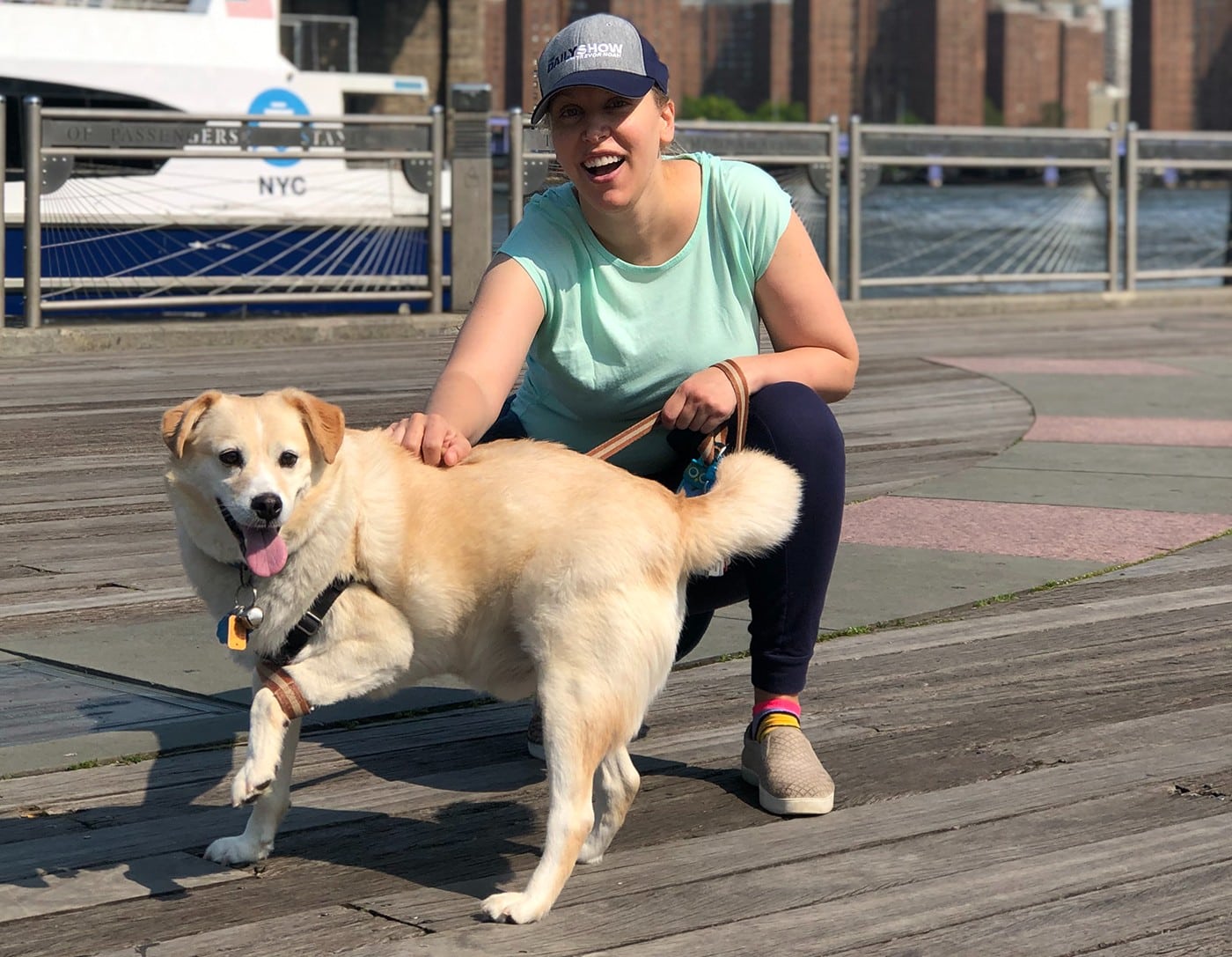Walking your dog regularly is essential — and so is the kind of gear you use on those walks. While there are many choices in terms of style, material and pattern, not all these decisions should be based on fashion.
Sometimes, it comes down to function, and for many dog parents, a harness is the perfect solution.
“Walking dogs on harnesses has its pros and cons,” says Dr. Amanda Nascimento, head of integrative veterinary medicine and research at NHV Natural Pet. “For some breeds, it is absolutely necessary, such as brachycephalic breeds like Pugs, French Bulldogs and English Bulldogs.” Brachycephalic breeds are the ones with a flatter face and a shortened snout. They are cute, but they often have breathing problems, says Nascimento, and it’s important to avoid putting extra strain on their trachea by using a collar that goes around the neck. “Pets who have other existing neck troubles, including slipped disks, collapsing tracheas or laryngeal paralysis should not be walked on collars to avoid further damage or pain.”
Harnesses also give you more control over a dog that tends to pull when walking on a leash. For smaller breeds, a harness allows you to quickly lift your pooch if there’s some kind of danger approaching at street level.
Related: Does Your Dog Really Need to Wear a Seat Belt or be in a Car Seat?
They also tend to be more secure for those dogs who like to slip out of their collar. “In general, a harness is safer for dogs who may be prone to escaping on walks because there are more points of contact,” says Nascimento. “If a pup slips out of a collar, they’re gone just like that. It takes more work for your pup to get out of a harness, so you will have more time to react.”
And then there are the pullers. If your dog is dragging you all over the place, there are harnesses which have the leash attachment in the front at the chest. Pulling when wearing this type of harness will make the dog feel unbalanced, which makes them less likely to pull, says Nascimento. “A harness that evenly distributes weight low across the chest is also a better choice for pulling pups to avoid pressure on the trachea,” she adds.
Overall, harnesses allow for greater control of a dog, says Nascimento. “If your dog is acting out, you can get good control by directly grabbing on to the harness. An unruly dog on the end of a leash with only a collar on can be very difficult to control, and can easily slip out of the collar.”
Of course, this means a harness must be properly fitted to make it difficult to escape. “Never underestimate a dog’s inner Houdini!” the vet says.
How to correctly fit a harness depends on the type you have. Usually, you will need to measure your dog’s chest by wrapping a harness around the body from behind the front legs, or measure the chest and the neck circumference.
Related: The Secrets to Raising a Happy and Balanced Dog
Types of Harnesses
The two basic types of harnesses are a step-in style or a harness that goes over the head first. Each requires that you measure your dog if ordering online or visiting a shop without your pooch (who wants to do that!?). If your lucky dog is with you in a store, you need to know what a good fit looks like.
A Step-In Harness. This type of harness is the easiest and the quickest to put on. Some of them are more adjustable than others.
For a simple step-in harness, lay the harness on the ground, put your dog’s paws through the holes for the legs, pull up and buckle closed on the dog’s back. You can adjust the length of the straps to provide a snug fit.
The Choke-Free Harness is a step-in design that is minimalistic and easy to put on. Measure your dog by wrapping a tape measure around the body behind the front legs. They advise you to take the measurement and add an inch for comfort. These collars are available in one-inch increments from 8 to 28 inches.
Related: I Learned Why Everyone Is Obsessed With The Puppia Harness
There are also step-in harnesses that are more like vests, like the eco-friendly version, denim, and even biker vests for the wild child.
No Pull Harness. The no-pull harness tends to be extra sturdy and is a good choice for larger dogs that pull hard on the leash on walks (small dogs tend to get the leash tangled in this type of harness). Some designs give you options to attach the leash, either on the back or on the front. There are also choke-free no-pull styles that allow you better control but don’t put extra pressure while doing it.
These harness discourage pulling with a leash attachment at the front on the chest, as it forces your dog to walk at your side for easy forward movement. When a dog pulls in this harness, the leash goes sideways rather than straight back, which encourages your dog to move next to you instead of in front. This allows for the “loose leash” walking that is the most comfortable for both dog and dog walker.
Over-the-Head Harness. This is the standard harness design, but if you’ve never used on, it can be tricky to put on. Once you realize which part slips over the head, the rest is easy. This harness gives you a lot of adjustability in a variety of styles (see here for instructions to properly (and easily) put it on your dog.
Harnesses for Nighttime Walks. If you live in a traffic-heavy area, or you live in a rural area without any streetlights, these harnesses keep your dog visible and safer. They can be illuminated with batteries or USB charging, or made from reflective fabric that will shine under streetlights. You can also buy a clip-on light to attach to the D-ring of any harness.
In general, says Nascimento, a harness gives you greater control of your dog, particularly if your dog likes to escape, or their walking style is unruly. “However, if the dog is perhaps a sled dog breed, where the pull instinct may be higher, than a collar may be better if by ‘control’ the owner means less pulling.”



















